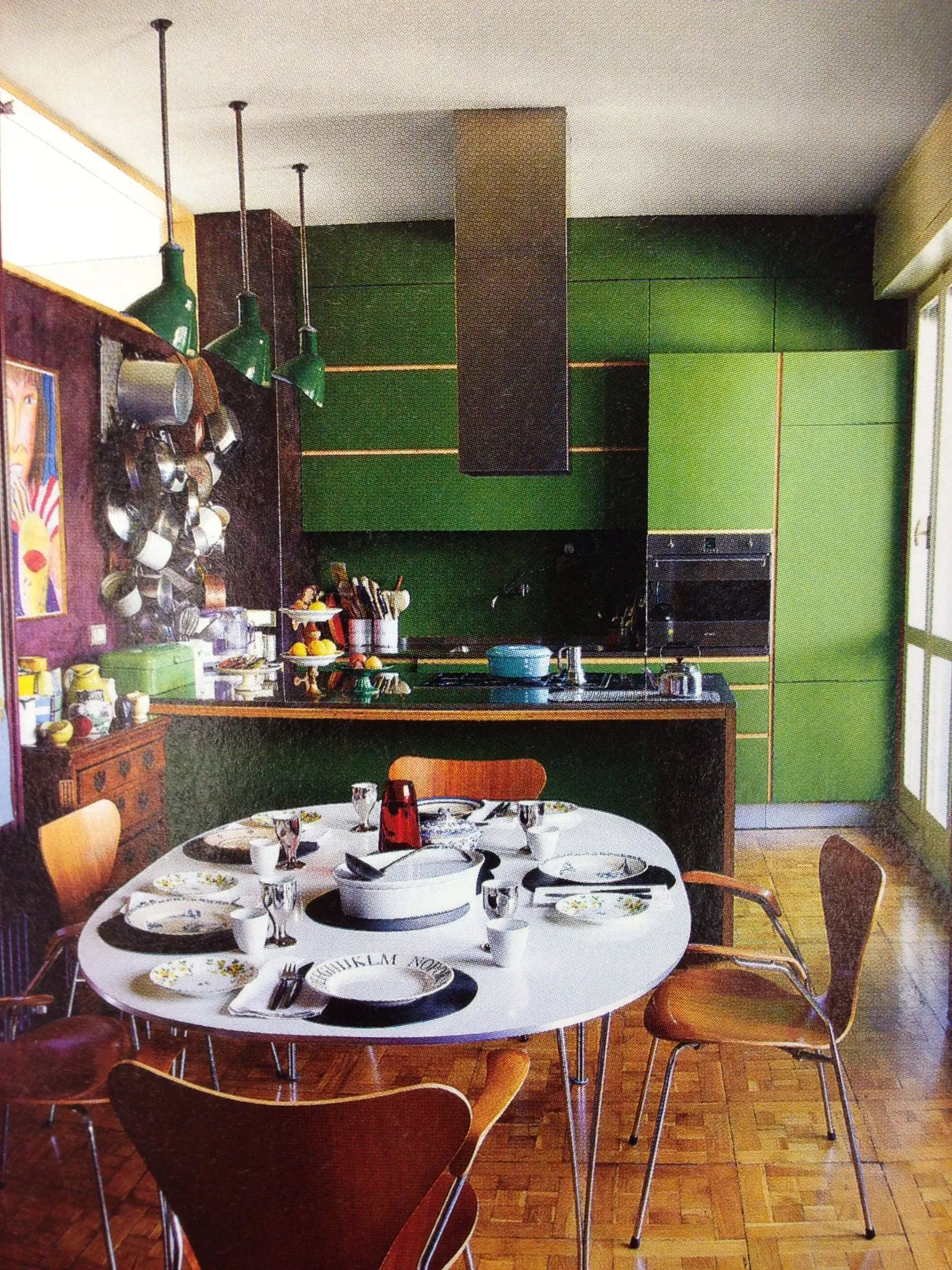The Allure of 60s Western Kitchen Decor
Step back in time and discover the captivating charm of 60s Western kitchen decor. This unique style blends the ruggedness of the Wild West with the sleek, optimistic design sensibilities of the mid-century era. The 1960s were a time of cultural shifts, and this fusion created a distinctive aesthetic that continues to attract admirers today. Western kitchen decor of this period offered a warm, inviting atmosphere, characterized by earthy tones, natural materials, and a touch of rustic elegance. This style wasn’t just about aesthetics; it represented a lifestyle, a connection to the outdoors, and a celebration of American heritage. Imagine kitchens that felt like a cozy ranch house, exuding a welcoming aura that made the space the heart of the home, perfect for family gatherings and casual entertaining. This guide will uncover everything you need to know to incorporate this iconic style into your own kitchen.
The Rise of Western Style in the 60s
The 1960s were a decade of change, and this transformation was reflected in every aspect of design, including kitchen decor. The Western style’s resurgence in popularity can be attributed to several factors. First, the post-war prosperity allowed families to invest in their homes, seeking styles that reflected their values and aspirations. Western themes resonated with a sense of freedom, adventure, and the pioneering spirit of the American West. Additionally, television and movies played a pivotal role, popularizing Western motifs and romanticizing the cowboy lifestyle. Shows and films featuring cowboys and ranch life ignited public interest and desire for this aesthetic. Furthermore, the emphasis on natural materials, a key component of Western design, aligned perfectly with the growing interest in organic living and a desire to reconnect with nature. All these elements contributed to the widespread adoption of Western kitchen decor, making it a prominent design trend of the decade.
Influences on 60s Western Kitchen Design
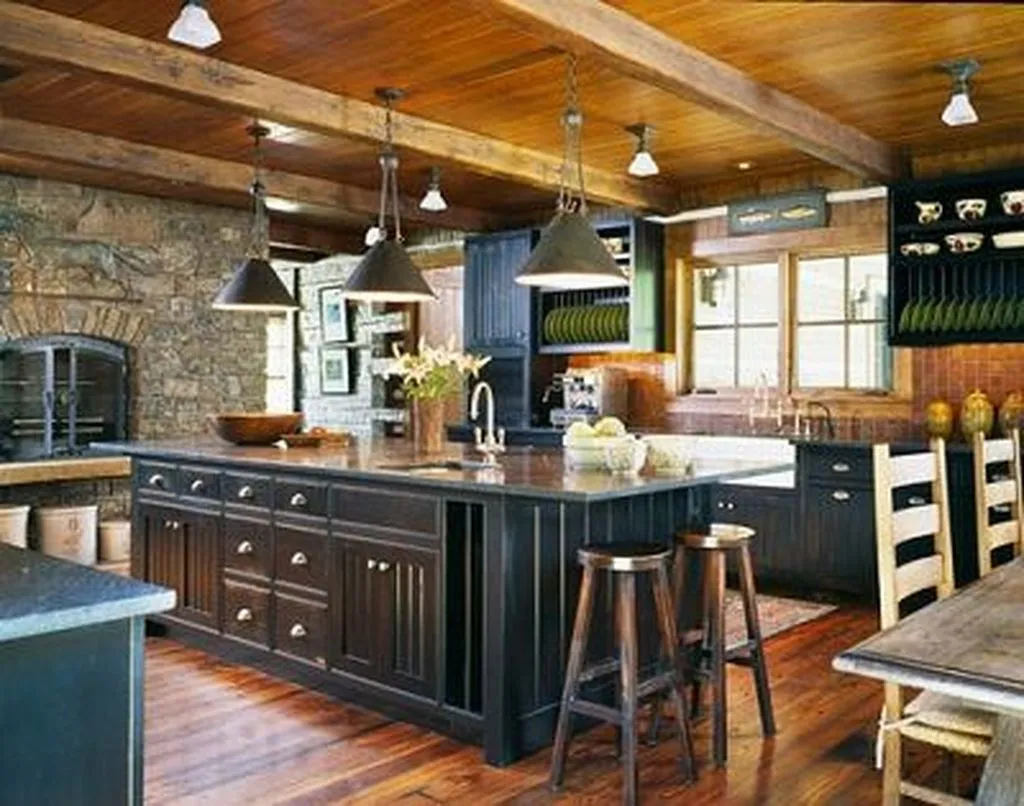
The design of 60s Western kitchens was not developed in a vacuum. It was a culmination of many influences, all working together to form its unique look. The primary influence was, of course, the American West itself. This encompassed everything from the vast landscapes and natural materials to the rugged lifestyles of cowboys and ranchers. The designs incorporated elements like wood, leather, and stone. Mid-century modern design also had a notable impact, adding clean lines, functionality, and simplicity to the Western aesthetic. This pairing created a harmonious blend of rustic charm and modern sophistication. Furthermore, the burgeoning interest in Southwestern culture, with its distinctive art, crafts, and vibrant colors, also left its mark. This influence brought touches of terracotta, turquoise, and geometric patterns to the kitchen. This cross-pollination of styles resulted in a kitchen decor that was stylish, inviting, and a true representation of the 1960s spirit.
Key Elements of 60s Western Kitchen Decor
To fully embrace the 60s Western kitchen decor, it’s important to grasp the key components that make this style unique. This style is defined by its harmonious blend of natural and manufactured elements. Think of exposed wooden beams, rugged stone backsplashes, and sturdy, practical furniture. The colour palette generally leans toward warm, earthy tones like browns, tans, and creams, often combined with pops of vibrant Southwestern colours. Materials are key, with wood, leather, and wrought iron being essential. Appliances and fixtures maintain functionality, often incorporating retro designs and materials that reflect the period. Accessories and decorations provide the finishing touches, including Western-themed art, decorative objects, and textiles. By mastering these elements, you can create a kitchen that encapsulates the essence of 60s Western style.
Color Palettes and Materials
The choice of colors and materials is crucial in capturing the spirit of 60s Western kitchen decor. The colour palette should draw inspiration from the natural landscape of the American West. Earthy tones such as warm browns, sandy tans, and creamy whites form the foundational hues, reflecting the vast deserts and rolling hills. Accents of burnt orange, deep red, and turquoise are often integrated, providing a pop of Southwestern flair. These colours can be incorporated through the use of paint, tiles, and accessories, maintaining a balanced and inviting atmosphere. Regarding materials, wood is undeniably the star. Whether it’s the exposed beams, cabinetry, or flooring, wood should be the primary element, adding warmth and a rustic feel. Leather, often used in seating or decorative accents, adds a touch of luxury and ruggedness. Stone, whether used as a backsplash or countertop, introduces an authentic element, reinforcing the connection to the outdoors. Combining these colors and materials creates a rich, textured, and visually appealing kitchen space, embodying the essence of the 60s Western style.
Furniture and Fixtures
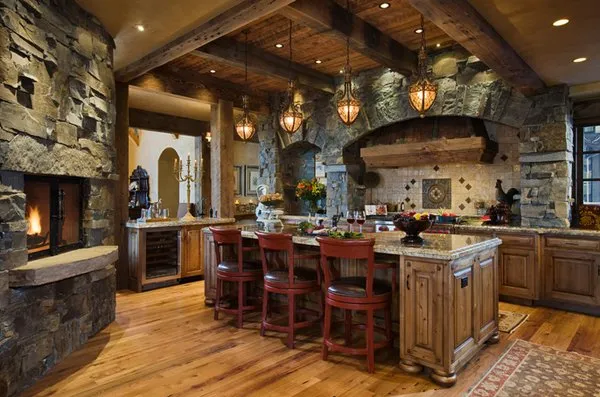
Selecting the right furniture and fixtures is essential in creating an authentic 60s Western kitchen. Choose sturdy, functional pieces that reflect the era’s design sensibilities. Kitchen tables were typically made of solid wood, often with a rustic finish to emphasize the natural grain. Chairs could be made of wood, with leather or vinyl seating, and should be comfortable and durable. Cabinets should have a simple, clean design, with wooden doors and rustic hardware. Open shelving is a great way to showcase dishware and decorative items. Fixtures such as light fixtures should also contribute to the style. Consider pendant lights with metal shades, rustic chandeliers, or sconces that can enhance the overall aesthetic. Look for appliances that have a retro look. Many companies offer modern appliances with vintage styling. Remember that furniture should be comfortable and practical, providing both style and function, and reflecting the values of the Western lifestyle.
Essential Decor Accents
Decor accents are what truly breathe life into a 60s Western kitchen. These elements personalize the space and capture the true essence of the style. Incorporate Western-themed art such as landscape paintings, vintage posters of cowboys, or prints with horses and cattle. Textiles are key, so consider adding patterned rugs, woven placemats, or tablecloths in earthy tones. Decorative objects like pottery, ceramic pieces, or cast-iron cookware enhance the rustic vibe. Another important element is the incorporation of natural materials, such as wooden bowls, woven baskets, or leather-bound books. You can also add vintage accessories like enamelware, mason jars, or retro kitchen utensils. Remember that your goal should be to find a balance between authenticity and practicality, adding personal touches that reflect the Western lifestyle. The right accents make the kitchen feel warm, inviting, and a true representation of the 60s Western style.
Incorporating Western Themes
Incorporating Western themes is a core element of achieving the authentic 60s style. This involves carefully selecting and integrating elements that evoke the spirit of the American West. Start by selecting furniture and accessories that evoke a sense of the ranch life. These can range from rustic wood tables and chairs to leather accents and woven rugs. Integrate items that reflect the cowboy way of life, such as horseshoe-shaped decor, framed vintage cowboy photographs, or even a hat rack. The goal is to transport visitors to the heart of the West, creating a space that feels both nostalgic and inviting. When it comes to colors, choose earthy tones to mimic the natural colors of the landscape. Furthermore, consider using fabrics with Western patterns, such as geometric designs or Southwestern-inspired prints. By thoughtfully selecting and incorporating these themes, your kitchen will reflect the character and charm of the 60s Western aesthetic.
Cowboy and Ranch Motifs
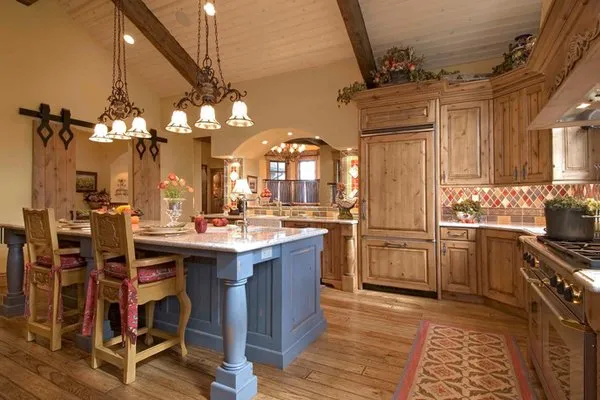
Cowboy and ranch motifs are central to the 60s Western kitchen style. These elements add a layer of authenticity and personality, capturing the spirit of the Wild West. Incorporate cowboy-themed decorations such as framed vintage photographs of cowboys, or a collection of cowboy boots placed strategically. Consider using horseshoe-shaped items. These can be trivets, wall decor, or even cabinet pulls. Saddle-inspired bar stools or chairs can be added to the kitchen island, adding a touch of the cowboy life. Use ranch-themed textiles, such as patterned tablecloths, placemats, or even curtains with Western prints. You can also add decor items that evoke the working ranch. These include branding irons, ropes, or tools like axes. The use of these motifs will enhance the aesthetic and create a kitchen that will reflect the unique charm of the 60s Western style.
Southwestern Inspiration
Southwestern inspiration adds a vibrant and distinct touch to the 60s Western kitchen design. This involves incorporating elements and colors that are characteristic of the Southwestern United States. Focus on the use of vibrant colors. Introduce burnt orange, terracotta, turquoise, and deep reds, either through the paint on the walls, tiles on the backsplash, or accessories. Use patterned textiles that feature geometric designs. Navajo-inspired rugs, or blankets can add depth to the decor. Consider adding pottery and ceramics with traditional Southwestern designs. These can be bowls, vases, or decorative plates. Another option is to incorporate artwork with Southwestern themes. Choose paintings or prints depicting landscapes, cultural figures, or abstract designs. This careful integration will enhance the aesthetic, reflecting the rich cultural heritage of the Southwestern style, while still embodying the spirit of the 60s Western kitchen.
Tips for Achieving the Look
Achieving the authentic 60s Western look involves several key strategies. Begin by establishing a solid foundation using the right color palette and materials. Focus on earthy tones, natural wood, leather, and stone. When planning your layout, consider a functional and inviting space that evokes a sense of warmth. Incorporate furniture and fixtures that embody the era’s design sensibilities. Solid wood tables, retro-styled appliances, and simple cabinetry are key. Remember to add decor accents that capture the spirit of the style. Western art, pottery, and themed textiles are essential. Don’t be afraid to mix old and new elements. Blend vintage finds with modern updates to create a space that feels fresh yet authentic. Finally, maintain a balance between functionality and aesthetics. The kitchen should be a practical and inviting space, perfect for daily use and entertaining. By keeping these tips in mind, you can create a 60s Western kitchen that is stylish, functional, and a true representation of the era.
Sourcing Vintage Items
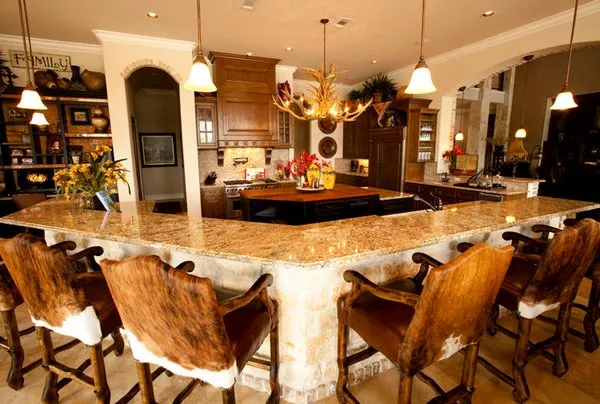
Sourcing vintage items is key to creating an authentic 60s Western kitchen. Finding the right pieces can add character and authenticity to your kitchen design. Begin by exploring local antique stores and vintage shops. These are often treasure troves of unique finds. Attend flea markets and estate sales, where you can find great deals and rare items. Online marketplaces such as eBay, Etsy, and Craigslist are also excellent resources for vintage furniture, decor, and accessories. When searching, focus on items that align with the 60s Western style. This includes sturdy wooden tables, leather seating, retro appliances, and themed accessories. Pay attention to details such as materials, construction, and design. You can also look for items that show some wear and tear, as this will add character. Being patient and resourceful will help you find the perfect vintage items to complete your 60s Western kitchen and bring your vision to life.
Mixing Old and New
Mixing old and new elements is a great way to create a unique and personalized 60s Western kitchen. This blend of styles allows you to incorporate vintage charm while enjoying the modern conveniences. Start by identifying key vintage pieces you want to include, such as a retro stove or a rustic wooden table. These can serve as focal points in your kitchen. Pair these with modern appliances, sleek countertops, and contemporary fixtures to maintain functionality. Balance the aesthetics by choosing materials and colors that complement both the old and the new. For example, you can pair a vintage table with modern chairs or combine a rustic backsplash with contemporary cabinetry. Consider adding accents that bridge the gap between the styles. You can incorporate modern artwork with vintage-inspired frames or use contemporary accessories with a Western theme. The goal should be to create a kitchen that feels cohesive, stylish, and reflects your personal taste, where old and new elements harmoniously coexist.
Maintaining the Style
Maintaining the 60s Western kitchen style is important to preserve its authentic aesthetic. Regular cleaning and maintenance will ensure the long-lasting beauty of the materials. Wood surfaces should be cleaned regularly using appropriate wood cleaners. Consider using leather conditioners on leather furniture and accents to keep them supple. Protect stone surfaces by sealing them to prevent stains. Refresh the decor seasonally, by adding new themed accents that will keep the kitchen looking fresh. Be mindful of future renovations. Choose materials and designs that are consistent with the original style. Keep an eye out for new vintage finds that will enhance the look. Staying updated on the latest trends can help keep the kitchen feeling stylish while staying true to its vintage roots. By following these maintenance practices, you can ensure that your kitchen continues to reflect the charm and character of the 60s Western style for years to come.
The Enduring Appeal of 60s Western Kitchens
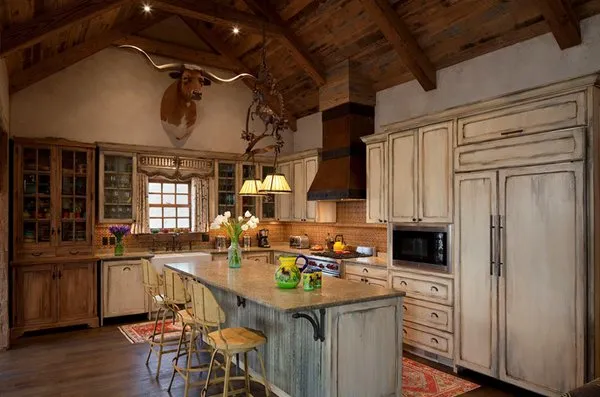
The enduring appeal of 60s Western kitchens lies in their unique ability to evoke a sense of nostalgia, warmth, and timeless charm. The style’s blend of rustic and modern elements, combined with the themes, creates a welcoming atmosphere. The use of natural materials and earthy tones makes the space feel warm and inviting. The connection to the American West and the celebration of the cowboy spirit provide a sense of freedom and adventure. For those seeking to create a kitchen that is both stylish and full of character, the 60s Western style offers a compelling choice. It’s a style that can transform a kitchen into a space that feels like home, a space that is perfect for gathering, entertaining, and creating lasting memories. The enduring popularity of this design reflects its ability to resonate with people across generations, proving that the allure of the Wild West never truly fades away.
